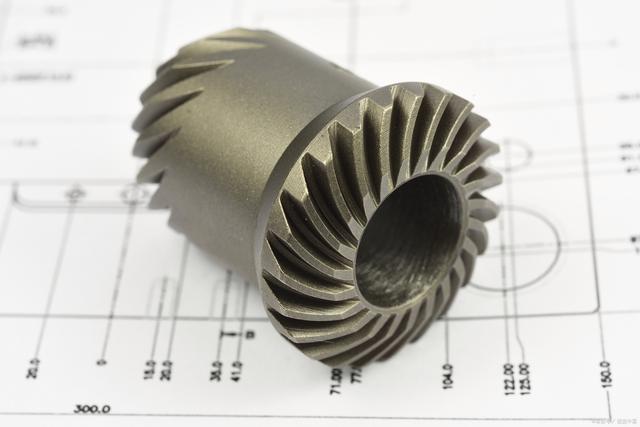The craftsmanship and technology of planetary reducer gears in the mechanical transmission system are ingenious
Today we introduce a common type of gear - planetary gearbox gears. This type of gear is widely used in various mechanical transmission systems, especially in situations where high reduction ratios are required. Next, we will provide a detailed introduction to the characteristics, structure, design points, and selection references of planetary reducer gears from the following aspects.

1、 The characteristics of planetary reducer gears are that planetary reducer gears are a transmission device with multiple gears, and their biggest feature is the ability to achieve large reduction ratios and high transmission efficiency. Through the mutual meshing of multi-level gears, the planetary reducer gears can achieve a larger reduction ratio while reducing the diameter of the output shaft, making the entire transmission system more compact. Secondly, the structure of the planetary reducer gears is mainly composed of the sun gear, planetary gear, inner ring gear, planetary carrier, and body. Among them, the sun gear is located at the center of the planetary gearbox and meshes with the surrounding planetary gears. The planetary gear is connected to the planetary carrier through a support shaft, and the planetary carrier is connected to the body. The inner ring gear meshes with the sun gear and planetary gear, thereby achieving power transmission.
2、 Design points of planetary reducer gears
1. Module Selection Module is one of the important parameters in the design of planetary reducer gears, which directly affects the strength, size, and load-bearing capacity of the gears. Usually, selecting the appropriate module is crucial depending on the usage scenario. Generally speaking, the modulus of planetary reducer gears should be determined based on factors such as their power, speed, and transmission ratio.
2. The selection of tooth number is another important design parameter, which affects the transmission ratio, overlap, and contact strength of gears. When determining the number of teeth, multiple factors need to be comprehensively considered, such as material, modulus, helix angle, etc.
3. Spiral angle selection: Spiral angle is another important parameter in the design of planetary reducer gears, which affects the noise, contact strength, and bending strength of the gears. Usually, the larger the helix angle, the higher the bending strength of the gear, but the corresponding increase in noise.
4. Precision level selection: Precision level is one of the indicators for measuring the manufacturing quality of planetary reducer gears. The higher the accuracy level, the higher the manufacturing difficulty and cost, but its performance and lifespan will also be correspondingly improved. Therefore, when selecting the accuracy level, multiple factors need to be comprehensively considered, such as usage, cost, and lifespan.
3、 Selection reference
1. Power and torque: The power and torque of the planetary reducer gear are important factors in the selection model. Generally speaking, the higher the power, the greater the required torque Speed and transmission ratio are important parameters in the design of planetary reducer gears. Generally speaking, the higher the rotational speed, the greater the required transmission ratio.
3. Installation method and size: The installation method and size of the planetary reducer gear are also important factors in selecting its model. Different installation methods and sizes require different planetary gearbox gears to adapt. In summary, as a common type of gear, planetary reducer gears have a wide range of application scenarios and characteristics such as high precision and high efficiency. When designing and selecting, it is necessary to comprehensively consider multiple factors to determine the appropriate model and parameter indicators.

